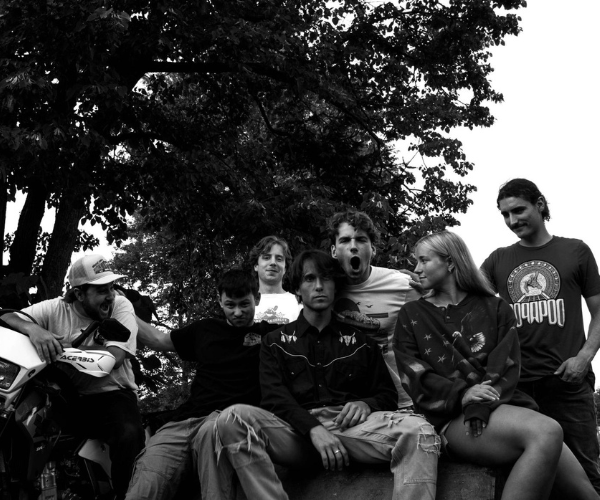Forget that the dress, with its full crinoline skirt and multiple ruffles and flounces, would be considered downright unfashionable in today’s world of sleek Vera Wang creations or that the marriage ended in an ugly, headline-grabbing divorce. The wedding gown Lady Diana Spencer wore when she said, “I do” to Charles, Prince of Wales, July 29, 1981, is what many people will be lining up to see when Diana: A Celebration opens at the Western Reserve Historical Society Feb. 23.
Twenty-five years after she walked down the aisle of St. Paul’s Cathedral in London, the confection of silk taffeta, tulle and lace remains the most famous wedding dress in the world, the very embodiment of the fairy tales on which so many little girls are still raised.
Twenty-five years after she walked down the aisle of St. Paul’s Cathedral in London, the confection of silk taffeta, tulle and lace remains the most famous wedding dress in the world, the very embodiment of the fairy tales on which so many little girls are still raised.
Walk out of the Royal Wedding Gallery, however, and you’ll see evidence of what Diana’s brother Charles, the ninth Earl Spencer, calls “a very ordinary girl who ended up leading an extraordinary life.”
In the Childhood Gallery, there are things that could be found in the bedroom of any girl growing up in the ’60s and ’70s: a ratty plush cat, a metal-and-plastic typewriter, a vinyl photo album featuring a big flowered hippopotamus on the cover, a stuffed blue-gingham frog that looks remarkably like something from a seventh-grade home-economics class. And the section devoted to Diana’s charity work is testimony to her understanding of real-world problems such as homelessness and AIDS.
But reality is a limited commodity in this nine-gallery retrospective of the princess’s life. There are no indications of her well-publicized eating disorders or marital problems. And reference to the August 1997 car crash in a Paris tunnel that killed her is limited to a draft of the speech her brother gave at her funeral. This is, after all, an exhibit compiled under her family’s direction.
“It’s not a hard look at Diana’s life,” Charles Spencer concedes. “It’s very much a positive history, the best bits touched by the tragedy of her early death.”
The family came up with the idea of an exhibit a few months after Diana died. “There were various commercial operations that sprung up immediately after Diana’s death, which we found a bit distressing,” Spencer explains. “We were nervous that somebody else would put on a display of her life story.”
A professional curator went through Diana’s personal effects, which were being stored in the attic rooms of Althorp House, the family’s 500-year-old ancestral home located 90 minutes northwest of London.
“It would have been too much for me to have gone through my sister’s things,” Spencer says, adding that he thought an outsider would bring objectivity to the process that no family member could.
Choosing 150 items to tell the story of Diana’s life was no small task, according to Nick Grossmark, one of two art handlers hired to do the job. The June 1997 charity auction of 79 dresses at Christie’s New York auction house, for example, hardly put a dent in Diana’s extensive designer wardrobe. And many of her toys and childhood possessions were still at Althorp.
“It took about two months to go through everything,” he remembers. Some items, such as the black-leather tap shoes and book on swimming and diving, illustrate youthful interests. Others, such as the red 1950s toy car, made it into the exhibit because they are in the home-movie clips of Diana and her siblings shot by their father, an avid amateur photographer, shown in the Childhood Gallery. It is this footage that remains Spencer’s favorite feature. “It’s just a reminder of a shared childhood,” he says.
Grossmark and colleague Grame Murton initially chose fashions for the Style Gallery that were widely recognized from magazine and newspaper photographs. “Her whole emphasis on life was the fact that she was the people’s princess,” Grossmark says.
The ensembles were then pared down according to Spencer’s dictate that they “stress the charitable side of Diana’s life to the general public.” The result is 28 outfits, each displayed with video footage of the princess wearing them, that include everything from cocktail dresses and evening gowns by the likes of Valentino and Versace to a simple pair of Georgio Armani stretch trousers and sleeveless denim Ralph Lauren shirt worn on a January 1997 trip to Angola to highlight the dangers of land mines. Similarly, the items representing the princess’s charitable interests run the gamut from an itinerary for an official visit to Zimbabwe to a prayer book from Mother Teresa.
Grossmark and Murton rounded out the exhibit with a prelude of Spencer family history — a drawing by John Singer Sargent of Diana’s paternal grandmother shows the princess’s striking resemblance to her — and a selection of the most exciting family jewels, including the tiara Diana wore on her wedding day.
Pieces such as the Riviere necklace, a rope of 46 detachable diamonds, quickly dispel the notion many still hold that Diana was “a poor schoolteacher who was swept off her feet,” says John Norman, president of Arts & Exhibitions International, the Aurora-based company responsible for taking the exhibit on tour.
The exhibit opened to the public July 1, 1998 — what would have been the princess’s 37th birthday — in a converted 17th-century stable block at Althorp. Five years later, Norman approached Spencer about taking Diana: A Celebration on the road, since the exhibit, like Althorp itself, was only open to the public during July and August.
“Obviously, a lot of people wouldn’t be able to come to England,” Spencer says. “And Diana had a huge fan base in the States.” Still, Spencer demanded that the objects be perfectly cared for and everything be done to the same standards as at Althorp.
The three-year, five-city tour of North America was originally scheduled to conclude at the Dayton Art Institute in June 2006. But when negotiations to take the exhibit to Shanghai fell through, Norman decided to bring it to his hometown before returning it to Althorp for its annual showing.
The additional space provided by museums for the touring exhibit even has its advantages. The wedding gown, for example, is displayed in a freestanding case with the 25-foot train fully extended, not in a cabinet against the wall with the train rolled up as it is at Althorp. Nearly 10 years after the princess’s death, the exhibit remains essentially the same — a testament, according to Spencer, to the curators: “The choice of objects was spot-on, really.”
Diana: A Celebration runs Feb. 23 through June 10 at the Western Reserve Historical Society. For more information, call (216) 721-5722, Ext. 286.



